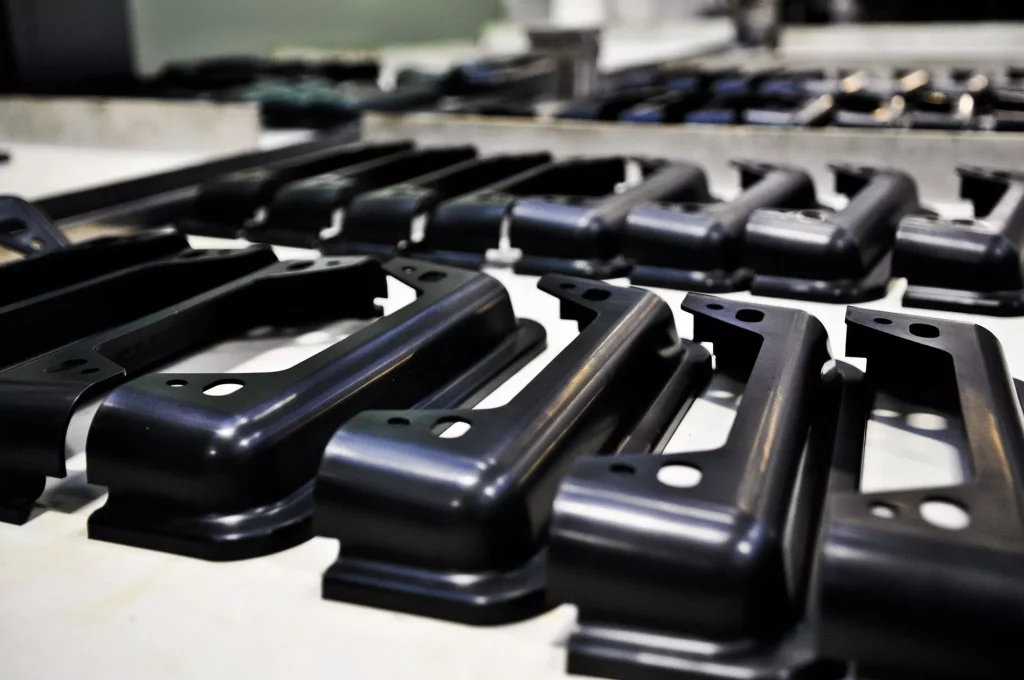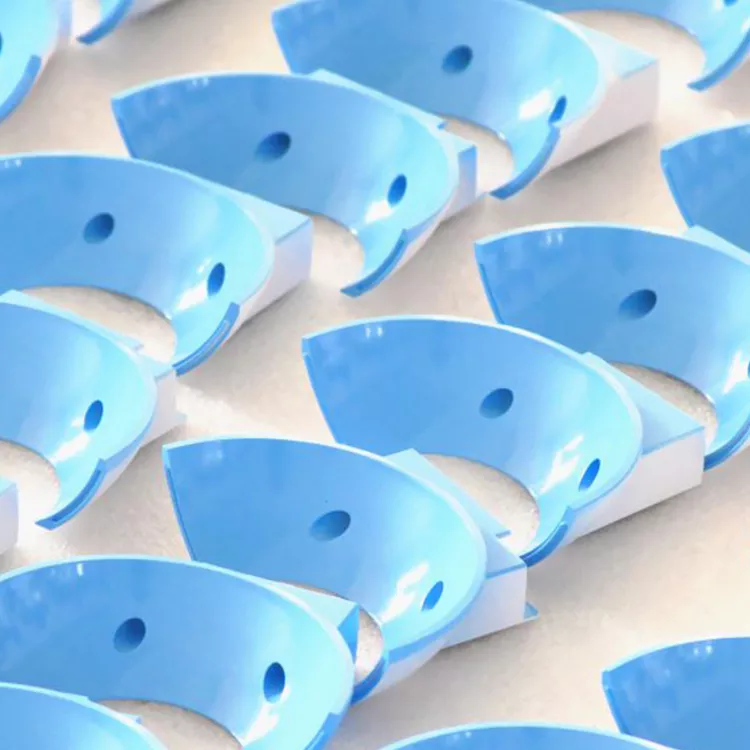Comprehensive
Quick-Turn Urethane Casting Production
Create high quality cast urethane parts on demand with precision and speed.


Urethane Casting Services
urethane casting can prove extremely valuable for early market testing
Our urethane casting service gives you access to high quality, low volume “production-like parts” in a variety of rigid, and soft urethane materials. Castings can even be colored to a wide range of colors and textures and Anpllo will match pigments for Pantone, RAL, or samples provided. Our cast urethane parts resemble your final product not only in shape but also in appearance and finish. Urethane castings provide a visual, practical, and functional evaluation plus can prove extremely valuable for early market testing.
Parts produced every year
Customers Served
Countries present
Why Choose Us
Urethane casting is a traditional manufacturing technology that is most commonly used during the prototyping process. Urethane casting produced by Anpllo can generally be expected to hold +/- .010″ tolerances with +/-0.003 in/in (whichever is greater). For urethane casting equipment and parts with tight tolerance requirements, Anpllo generally recommends CNC machining or injection molding services. Regarding soft parts, there is a Shore A tolerance of +/-10. Please note, these tolerances are not guaranteed, because geometries vary and every application is different, so please speak directly with one of our Anpllo experts.

Urethane Casting Materials
Cast urethane parts are often compared to injection molding materials. For example, a stiff urethane cast part may be described as "polycarbonate-like," and a more flexible plastic may be "polypropylene-like." We group our urethane materials into general categories to help you make quicker decisions and get the best performance on your project. The list below describes the categories of materials and technical examples when selecting polyurethanes.
| Material Name | Shore Hardness | Description | Technical Information | Data Sheets |
|---|---|---|---|---|
|
General Purpose |
Shore D 76-80 |
An impact-resistant Shore 78D material used for a variety of purposes from enclosure housings to concept models. This material exhibits ABS-like properties. |
TC-878, TC-852, or equivalent |
General Purpose Data Sheet |
|
Rigid Clear |
Shore D 80 |
A versatile, Shore D 80, clear polyurethane. A matte finish will give a frosted appearance and a higher gloss will increase its transparency. |
Poly-Optic 1410 or equivalent |
Rigid Clear Data Sheet |
|
ABS-Like, FR |
Shore D 78-82 |
A tough Shore 80D flame retardant material that is UL Listed with a flammability rating at 1/16" (1.6 mm). |
TC-891-FR or equivalent |
ABS-Like, FR Data Sheet |
|
Polypropylene-Like |
Shore D 65-75 |
A tough and abrasion-resistant flexible urethane with polypropylene-like ductility. |
TC-872, HP-2270D, or equivalent |
Polypropylene-Like Data Sheet |
|
Polycarbonate-Like |
Shore D 82-86 |
A stiff, high impact, high HDT, material with a wide variety of uses. Simulates polycarbonate (non-clear), Shore 84D. |
TC-854 or equivalent |
Polycarbonate-Like Data Sheet |
|
Glass-Filled Nylon-Like |
Shore D 85 |
A stiff, USP Class VI, high-performance urethane with high impact strength and a HDT of 190°F (88°C). |
PT8902 or PT8952 (FR) |
Glass-Filled Nylon-Like Data Sheet |
|
Rubber-Like Polyurethane |
Shore A 25-95 |
A Shore A elastomer with a high elongation to break. |
F-130 to F-190 or equivalent |
Rubber-Like Polyurethane Data Sheet |
|
Clear Rubber-Like Polyurethane |
Shore A 40-95 |
A colorless Shore A elastomer with a high elongation to break. Matte finish will give a frosted appearance, and higher gloss will increase its transparency. |
WC-540 to WC-595 or equivalent |
Clear Rubber-Like Polyurethane Data Sheet |
Urethane Casting Tolerances
Typically Cast Urethane Part Tolerances
| Description | Tolerance Notes |
|---|---|
|
Distance Dimensions |
+/- 0.010” or +/- 0.003” per inch, whichever is larger, is typical. Irregular or overly-thick geometries may cause deviances or deflection due to shrinkage. |
|
Shrink Mitigation |
A shrinkage rate of +0.15% can be expected due to thermal expansion of the liquid, and the response of the flexible mold. |
|
Surface Quality |
Surface finish is externally smoothed to a satin or matte surface. Grow lines may be present on internal or difficult-to-access features. Polishing or custom finishes must be clearly defined and agreed upon at the point of order. |
|
Feature Definition |
Sharp corners and text may appear slightly rounded. |
|
Size Recommendation |
We can offer urethane cast parts as large as 30” (0.762 m) long. |
This table is based on the assumption that designs have an adequate draft, radii, and coring for manufacturability. Please see Anpllo's Manufacturing Standards for more information on tolerances per process.
What is Urethane Casting
Urethane Casting (or polyurethane casting, or urethane moldings) is ideal for additive manufacturing short-run production of pieces made from a plastic injection-molded resin. Often performed after an RTV mold (also called a room temperature vulcanization mold) is made from a Stereolithography (SLA) prototype, urethane castings are a cost-effective way to reproduce production-ready parts in small quantities.
After a mold is created, Urethane Casting material – synonymous with polyurethane casting material – is injected into the mold’s “void.” This allows for near-perfect copies of the original prototype to be created. We have low durometer urethanes that can be very soft, but we can also make stereolithography molds and inject silicone rubber into it.
Steps For Creating a Urethane Casting include the following.
- Risers are put on the part to allow air to escape from the final mold
- A thin film is attached to the part, which will act as a seam for the final mold
- A box is built around the entire structure, and it is filled with silicone rubber
- Once the silicone rubber has cured, the box and risers are removed, the mold is opened at its seam, and the original part is removed
- The mold is ready for use and any type of urethane can now be injected into the mold to create an exact duplicate of the original
Urethane Casting Options
Urethane is one of the most versatile materials available, and can be manipulated to provide a wide range of properties, textures, hardnesses and so on. At Anpllo, we take pride in our versatility, and are ready to work with you to overcome any challenges in creating the parts you need.
Color:
We can produce exactly the shade that is needed through our wide variety of paints.
Finishes:
The urethane casting process is ideal for custom finishes and textures — due to the nature of the 3D printed original pattern and the qualities of the silicone rubber mold. We can texture the mold and part according to any SPI finish or MT finish, as well as any custom design you may require.
Resins:
Urethane is versatile and able to nearly reproduce the qualities of a number of materials, including ABS, PP and PE. When ABS-like, PP-like and PE-like prototypes are needed, you save on the cost of low-volume quantities of those materials by making use of the versatility of urethane.
Value-added options:
When additional requirements beyond urethane casting are needed to create your part, we can provide them, including spray painting, pad printing, screen printing and more.
Get a quote for your cast urethane parts
If you’re ready to start a cast urethane or silicone project, get a free quote in 24 hours or less by filling out our quick quote form.

